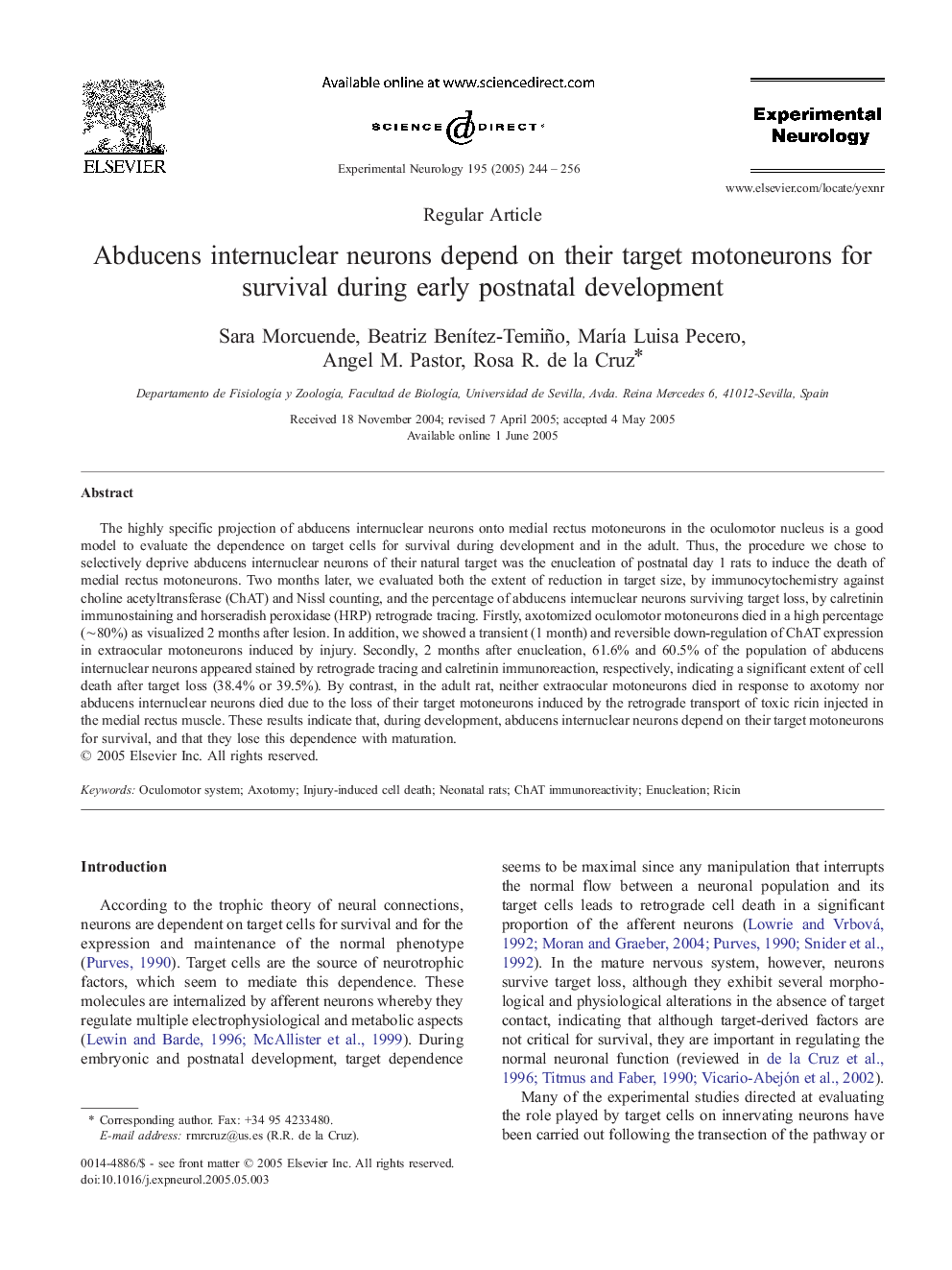| Article ID | Journal | Published Year | Pages | File Type |
|---|---|---|---|---|
| 9191867 | Experimental Neurology | 2005 | 13 Pages |
Abstract
The highly specific projection of abducens internuclear neurons onto medial rectus motoneurons in the oculomotor nucleus is a good model to evaluate the dependence on target cells for survival during development and in the adult. Thus, the procedure we chose to selectively deprive abducens internuclear neurons of their natural target was the enucleation of postnatal day 1 rats to induce the death of medial rectus motoneurons. Two months later, we evaluated both the extent of reduction in target size, by immunocytochemistry against choline acetyltransferase (ChAT) and Nissl counting, and the percentage of abducens internuclear neurons surviving target loss, by calretinin immunostaining and horseradish peroxidase (HRP) retrograde tracing. Firstly, axotomized oculomotor motoneurons died in a high percentage (â¼80%) as visualized 2 months after lesion. In addition, we showed a transient (1 month) and reversible down-regulation of ChAT expression in extraocular motoneurons induced by injury. Secondly, 2 months after enucleation, 61.6% and 60.5% of the population of abducens internuclear neurons appeared stained by retrograde tracing and calretinin immunoreaction, respectively, indicating a significant extent of cell death after target loss (38.4% or 39.5%). By contrast, in the adult rat, neither extraocular motoneurons died in response to axotomy nor abducens internuclear neurons died due to the loss of their target motoneurons induced by the retrograde transport of toxic ricin injected in the medial rectus muscle. These results indicate that, during development, abducens internuclear neurons depend on their target motoneurons for survival, and that they lose this dependence with maturation.
Related Topics
Life Sciences
Neuroscience
Neurology
Authors
Sara Morcuende, Beatriz BenÃtez-Temiño, MarÃa Luisa Pecero, Angel M. Pastor, Rosa R. de la Cruz,
